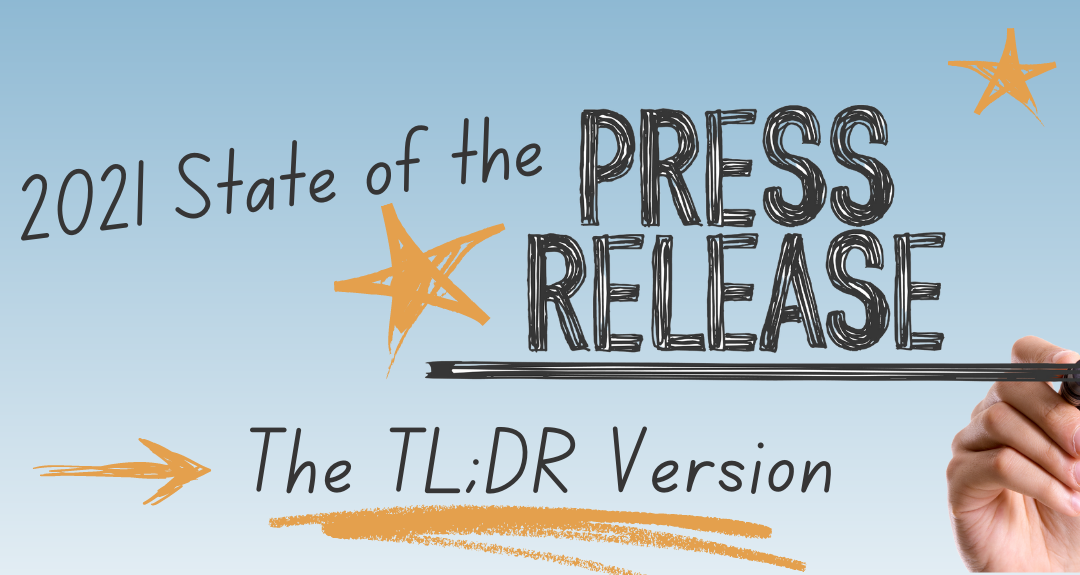
by Brandon Glenn | May 25, 2022 | Blog
The Oxford comma represents the rare example of a debate among grammar nerds that has spilled over into pop culture – at least a little bit.
From Vampire Weekend beginning a song with the pressing question of “Who gives a f— about an Oxford comma?” to a court case whose outcome hinged on the lack of an Oxford comma, few questions of grammar have captured the popular imagination like the debate over the appropriate usage (or lack thereof) of this one little punctuation mark.
First, let’s examine exactly what the Oxford comma – also called the Harvard comma and serial comma – is, which is more confusing to explain than understand through an example. The debate over the Oxford comma revolves around whether to include a comma before a coordinating conjunction such as “and” or “or” in a list of three or more items.
Here’s an easier way of thinking about it: Does the last comma belong in the following sentence? “The fruit bowl included apples, bananas, and oranges.” Oxford comma supporters would say that it does.
Adding to the debate, some of the top “authorities” on writing offer differing opinions on the Oxford comma, with the Chicago Manual of Style recommending it, and AP Style generally opposing it, except for cases in which omitting it would lead to confusion or misinterpretation.
And that is what really gets us to the crux of this debate. Grammar is about clarity, not memorizing seemingly arbitrary rules to separate “right” from “wrong” in writing. Here, the often cited “Ayn Rand example“ can be instructive.
Consider the sentence: “This book is dedicated to my parents, Ayn Rand and God.”
In this case, the lack of Oxford comma seems to indicate that the writer’s parents are (somehow) Ayn Rand and God, while inclusion of the Oxford comma would more clearly illustrate that the writer is referring to three distinct entities.
To me, this seems to be the most compelling argument for the Oxford comma, while most arguments against it claim that it is often “unnecessary and pointless.” Indeed, in some cases the Oxford comma may be unnecessary, but because it doesn’t detract from the quality of writing or its clarity, I advocate for its usage.
Ultimately, what’s more important than deciding whether to use the Oxford comma is consistency in application. The worst Oxford comma-related outcome is when the same piece of content sometimes uses it, and sometimes doesn’t.
Unfortunately, in the end it’s somewhat of an unsatisfying answer, but it is also the one that makes the most sense when it comes to the Oxford comma: Decide whatever you like but make a choice and stick with it.

by Brandon Glenn | Nov 10, 2021 | Blog
There are a few yearly traditions Americans rally behind and await with eager longing and hushed anticipation – birthdays, holidays and the publishing of Cision’s “State of the Press Release” report.
The 2021 version of this annual 20-something-page paean to the press release – brought to you by the people who profit the most from press releases, it bears keeping in mind – recently arrived on our virtual doorstep. As is the hallowed tradition in these parts, we read the report and summarize it below to save you the anguish, remorse and indignity.
The report is the result of Cision’s examination of more than 100,000 press releases from the prior year, coupled with a survey of PR pros about their press release practices. For those of you who find the full report too long and do not want to read it (TL;DR), here are five key take-aways to consider:
- In terms of volume, the industry has returned to a pre-COVID-19 level of “normal”: Seventy-four percent of respondents said that their press outreach was either on par or more frequent than before COVID or not impacted by the pandemic at all.
- Thought leadership releases represent an opportunity for some companies (and a business development opportunity for Cision): As virtually anyone familiar with the concept of a press release knows, the primary reason (83%) companies distribute them is to share business news. Cision notes that just 47% of companies use press releases to share thought leadership content, such as research, data, tips and best practices. Other leading reasons for issuing press releases include: product launches (40%); diversity, equity and inclusion (25%); and corporate social responsibility (19%).
- For headlines, less is more: Certainly, headlines are critical to a release’s messaging, and Cision recommends keeping them fewer than 70 characters. Email applications and Google’s search engine will cut off any text over that amount, according to Cision.
- Mind your action verbs: The verb “announce” is popular in headlines but doesn’t generate a commensurate amount of page views. “Launch” is also widely used but performs proportionately better with its usage. Also consider “show,” “roll out,” “reveal,” and “allow.”
- Check it twice: Not surprisingly when dealing in the written word, Cision found thousands of errors in “final” releases sent by clients. The most common types of errors include: hyperlink errors, misspellings, incorrect dateline dates, grammar mistakes and day/date discrepancies.
What will 2022 hold in store for the state of the press release? The sheer possibilities almost exceed the human capacity for thought (or at least mine) but be sure to return here next year to learn all about it. Until then, our nation turns its lonely eyes to you, Cision.

by Brandon Glenn | Sep 15, 2021 | Blog
Group brainstorming sessions are largely a waste of everyone’s time.
Before I’m burned at the stake for corporate heresy, consider that this seemingly controversial statement isn’t just coming from me. Google “Why brainstorming doesn’t work” and you’ll surface a plethora of articles from leading publications like Harvard Business Review, Inc., Fast Company, The Washington Post and The Guardian.
In the abstract, brainstorming sessions seem to make a lot of sense: Harness the collective brain power of a bunch of smart people with differing viewpoints, encourage the free-and-easy flow of ideas by focusing more on quantity than quality, avoid criticism, embrace wild ideas, then sit back and let the magic happen.
Alas, I’ve found that in my years of corporate experience – and more importantly, numerous studies have shown – that group brainstorming sessions rarely yield innovative solutions. Instead, they are likely to produce a group of mediocre, half-baked ideas that result from participants understandably grasping for the lowest-hanging fruit.
Group brainstorming: The zombie idea that won’t die
So what’s so bad about group brainstorming? In short, it produces fewer ideas and worse ideas compared to individual brainstorming. A meta-analytic review of over 800 teams found that individuals are more likely to generate a higher number of original ideas when they don’t interact with others.
“After six decades of independent scientific research, there is very little evidence for the idea that brainstorming produces more or better ideas than the same number of individuals would produce working independently,” according to Harvard Business Review. “In fact, a great deal of evidence indicates that brainstorming actually harms creative performance, resulting in a collective performance loss that is the very opposite of synergy.”
There are a number of theories about why group brainstorming seems to stifle, rather than promote creativity. First, humans simply have a bias toward agreement and conformity, leading them to challenge marginal ideas less than they should. Next is the concept of “production blocking,” a process loss caused by the need to take turns speaking in group sessions. When only one member is allowed to speak at a time, it may cause other team members to forget earlier ideas shared or prevent them from sharing their immediate thoughts.
Additionally, there are the obvious problems that may occur when large groups of people gather for any problem-solving discussion: group think, social anxiety, loafing and regression to the mean.
Yet despite the accumulation of decades of evidence about its ineffectiveness, group brainstorming sessions remain an institution in much of Corporate America. Why? Essentially, it just “feels” right. On its face, group brainstorming is a democratic way of reaching consensus on the next idea a company should pursue, even if it’s not a particularly great idea. Ultimately, it’s this intuitive (but wrong) feeling that group brainstorming is the best approach to idea generation that explains its persistent survival in the face of widespread evidence to the contrary.
Brainwriting to the rescue
There is a better approach to developing new ideas: Keep the “idea generation” and “discussion” functions separate. In other words, write first, talk second.
In the technique known as “brainwriting,” team members first do their own thinking to develop and write down their ideas. Then, gather the team together and post the ideas (without the names of those who developed them) on a whiteboard. Only then can the discussion begin.
Certainly, discussion of ideas is still worthwhile, but importantly, it should not happen until the group has already created several distinct ideas to debate. “Raw” ideas rarely work; instead, “it’s the permutation and combination of the outlandish and banal that lead to the best proposals,” according to Fast Company.
Amen. We have the power to free Corporate America from the inefficiency, unproductivity and stifled creativity of the dreaded group brainstorm session. All we need to remember to do is write now and talk later.
by Brandon Glenn | May 26, 2021 | Blog
As artificial intelligence (AI) continues its inexorable march towards consuming more and more jobs previously done by humans, it may be a question of when, rather than if, humans become the new horses.
Think, for a minute, about how absolutely essential horses were to the economy 200 years ago. With much of the economy still industrializing and dependent on agriculture, horses were vital to the farm work that produced the world’s food. With no automobiles, horses also played a critical role in transportation, delivering goods to market and enabling humans to travel in coaches or by horseback.
Horses were so important that the U.S. equine population grew six-fold between 1840 and 1900 to more than 21 million horses and mules, according to a report in Foreign Affairs. Then came the internal combustion engine, replacing horses with cars in cities and tractors on farms. The U.S. equine population plummeted to 3 million by 1960, a drop of 88% in just 60 years.
For decades if not centuries, a related debate has loomed, ranging from “The Grapes of Wrath” to “2001: A Space Odyssey” and many others: Will technology replace and make human labor irrelevant? (Given that McKinsey reported five years ago that “currently demonstrated technologies could automate 45% of the activities people are paid to perform,” this is a subject that should be a concern for all workers – and that was five years ago!)
Now, with the rise of AI in marketing and public relations, the “Are humans the new horses?” question has begun to hit a little closer to home for PR professionals. Today, we may use AI software for routine, manual, time-consuming tasks such as transcribing interviews. Tomorrow – as AI gets better and smarter, which it most certainly will – we may use AI to write press releases, product descriptions, website copy and the like.
Once AI gets good enough to do that, it will likely begin to take human jobs. Sure, companies will still need some humans to feed information into the AI software to help the software write a press release, but assistance from AI will mean that companies need far fewer humans to produce the same amount of output.
Already, we’re seeing some examples of PR and marketing AI software – just not the kind that is sophisticated enough to take human jobs in a significant way. Copy.ai promises an “end to writer’s block” by helping users “generate marketing copy in seconds.” (I signed up for a seven-day trial and played around the software a little bit to write a product description; it seemed pretty good.) Similarly, Contilt pledges to “put the power of AI at your fingertips” by using software to generate article drafts and do research. No doubt there are plenty of similar startups today, and there will plenty more in the future.
These companies like to sell their AI as tools that will help humans do their jobs, better, which is true enough in the beginning. Then the AI gets smarter, and it begins to approach, but not meet, humans’ ability to edit content or draft a byline, for example. At this point, we’ve started on the slippery slope to where AI’s “good enough” work product becomes so much cheaper for companies to produce than a human-written article, that “good enough” becomes the industry standard for all articles and human writers start to lose their jobs. What a time to be alive!
So what’s a concerned PR professional to do? Data scientist Michael McBride offers three points of advice:
- Don’t get cocky: In one notable survey, 90% of responders thought that up to half of jobs would be lost to automation within five years, but 91% didn’t think there was any risk to their job. Don’t fall into the “It can’t happen to me” trap. It can.
- Make a process map of your job (extreme kudos to anyone who actually does this!): Create a process map that “visualizes the set of decisions and actions that make up your day-to-day life.”
- Double down on soft skills: Professions that require a tremendous amount of empathy and human interaction are among those least likely to be automated.
The good news is that, as it stands in 2021, there are still PR jobs available. Humans haven’t become horses – yet. Nonetheless, prepare for the coming onslaught of AI as if your career depends on it, because it probably does.

by Brandon Glenn | Feb 17, 2021 | Blog
Of all the deliverables we routinely encounter in public relations, none presents as much of a challenge as the humble byline.
Press releases are necessarily to-the-point and formulaic. Blog posts are often quick-and-dirty shorter pieces that are meant to quickly touch on a specific topic, rather than delve in deeply. (White papers don’t qualify as “routine” as they should be employed sparingly; once per quarter, at most, and even that may be pushing it.)
Bylines, however, are altogether different. To craft a coherent, well-reasoned, nonpromotional 800 to 1,000-word article that offers background, explanation and possible solutions on a pressing industry issue is difficult for a writer to do even in his or her own voice. Add to it the PR writer’s challenge of crafting the piece using the client’s thoughts in the client’s voice and the exercise becomes significantly more arduous.
In that spirit, following are three quick tips for writing a better byline.
Develop a written plan before any phone calls: To make the best use of subject matter experts’ (SMEs) time, start planning your byline long before any phone calls. What’s the major theme or “angle” you’re looking to convey to the reader? Start by brainstorming potential headlines, and then after you have a few, write out what could be the first couple sentences of the article. If you’re unable to get this far, it’s a strong sign your plan for the article isn’t solid enough, and it’s time to refine or rethink the angle.
Do your research: It’s fairly rare to find an idea that is completely new. In other words, whatever you’re planning to write about, it’s likely someone else has written about the same, or a similar, topic previously. Do a few variations of Google searches around the topic you’re planning to write about to evaluate what’s been said before. This will provide an idea of the well-trodden ground that’s been discussed ad nauseum and is better avoided, as well potentially spark ideas for new angles. Further, avail yourself of the research that other writers have performed. Good reporters will “show their receipts” in their articles with links to studies, surveys, data and other articles that can provide helpful background. Save time and boost efficiency by taking advantage of the work that’s already been done.
Come up with a targeted list of questions: Also filed under, “Don’t waste SMEs’ time.” Draw up a list of targeted questions for call participants to review prior to the call. In my experience, the top reason byline intake calls go off-the-rails is lack of preparation. Following a list of predetermined questions enables participants to remain focused and helps keep the call running smoothly. If you’re lucky, the SME will even read over the questions prior to the call and ponder potential responses, which generally helps immensely to boost a byline’s quality in the end.
Due to the nature of what we’re trying to accomplish with bylines, they’ll always be challenging to write. But there is a formula for success. Follow the three tips above to craft better bylines.
Page 3 of 6«12345...»Last »



